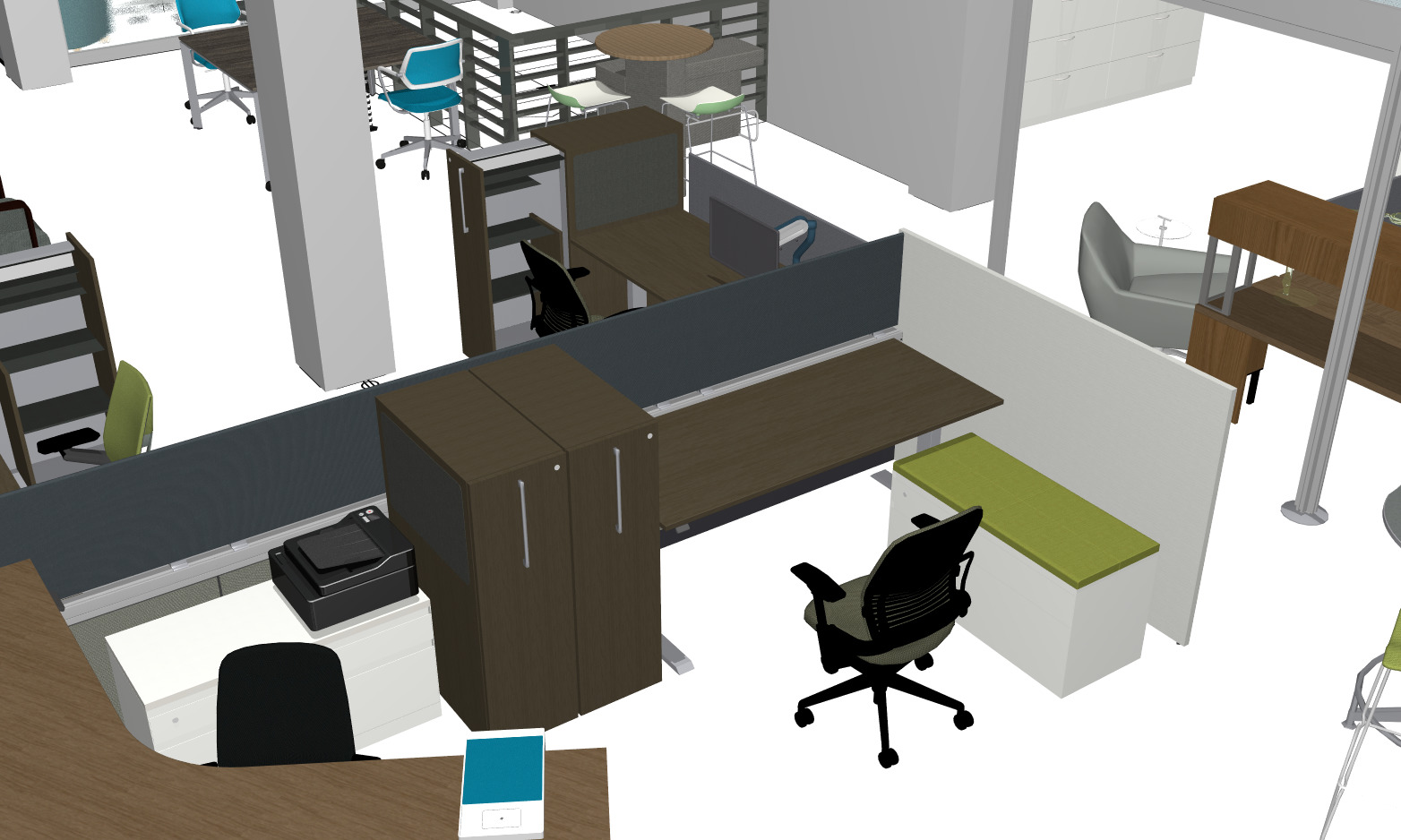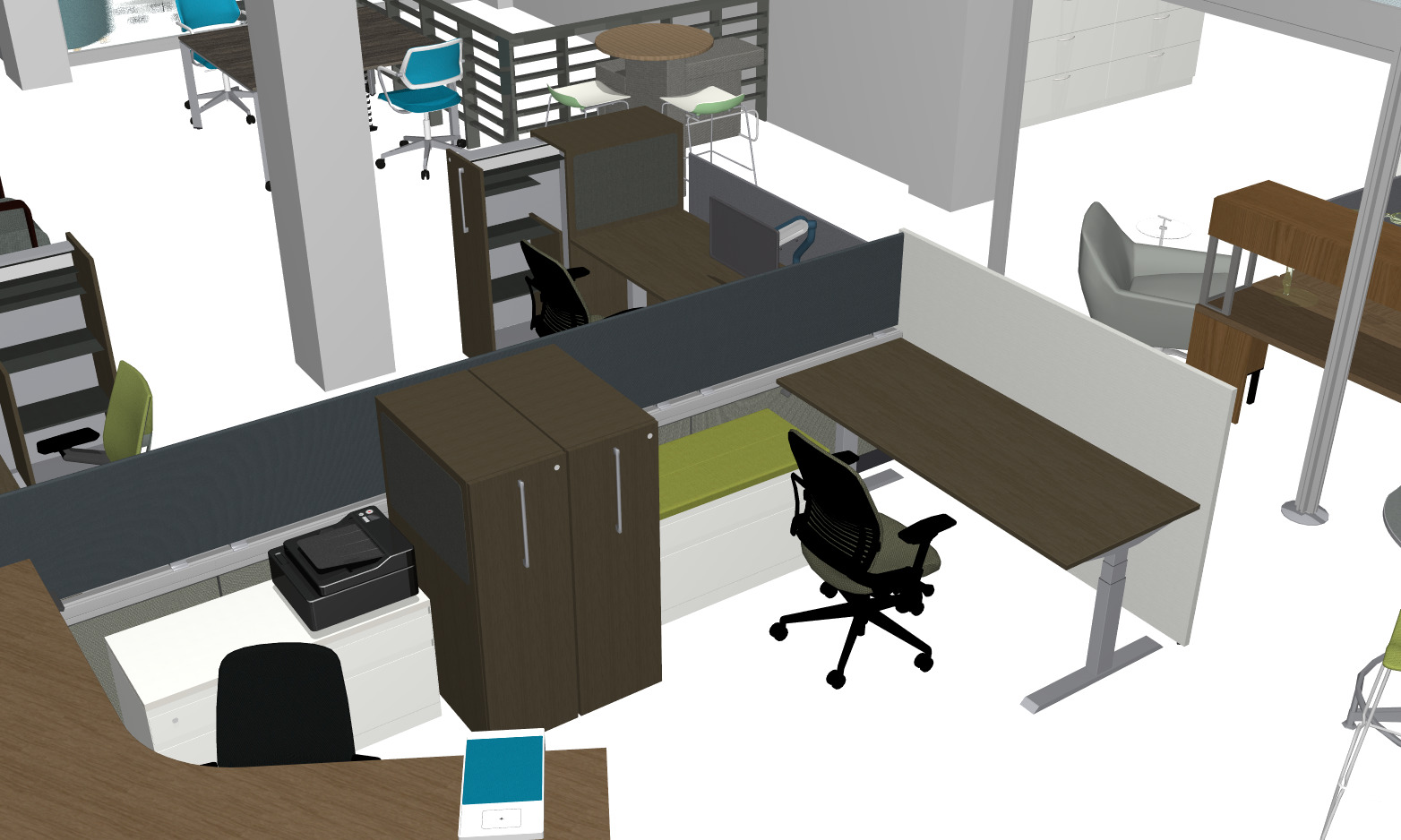The shock of having to completely re-imagine the way we do business was tough for everyone to figure out. Learning how to create a safe and healthy office environment was a challenge, but fortunately we were able to lean on the insights and expertise of Steelcase to develop our understanding of the post-Covid workplace. We knew that to be able to build safe environments for our clients, we needed to assess the safety of our own space first.
When concern and fear over rising coronavirus case counts in the United States started to boil over in mid-March, we knew we needed to take immediate action to protect the health and safety of our employees. We sent our teams to work from home, equipping them with their height-adjustable desks, ergonomic seating, monitor arms, and technology. While we had the capability to use our own installation crew to redeploy our teams with their desks and equipment to their homes, we know others weren’t as prepared to handle this rapid change. Our flexibility enabled us to adapt to changing community conditions without disrupting our ability to deliver services to clients. As shutdowns started to ramp-up across the country, we experienced some supply chain disruptions, but were able to identify clients in critical infrastructure and push their orders through the supply chain for our field teams to deliver and install.
As shutdowns relaxed, it was important for us to determine how to safely bring our team back to the office and resume normal operations. To do this, we had to think about how our office was designed currently, and what changes would need to be made to provide a safe post-Covid workplace. Fortunately, our office and our team were prepared for a post-Covid world. Entering the post-Covid workplace required a combination of new policies, procedures, and physical office changes. Here’s what we did:
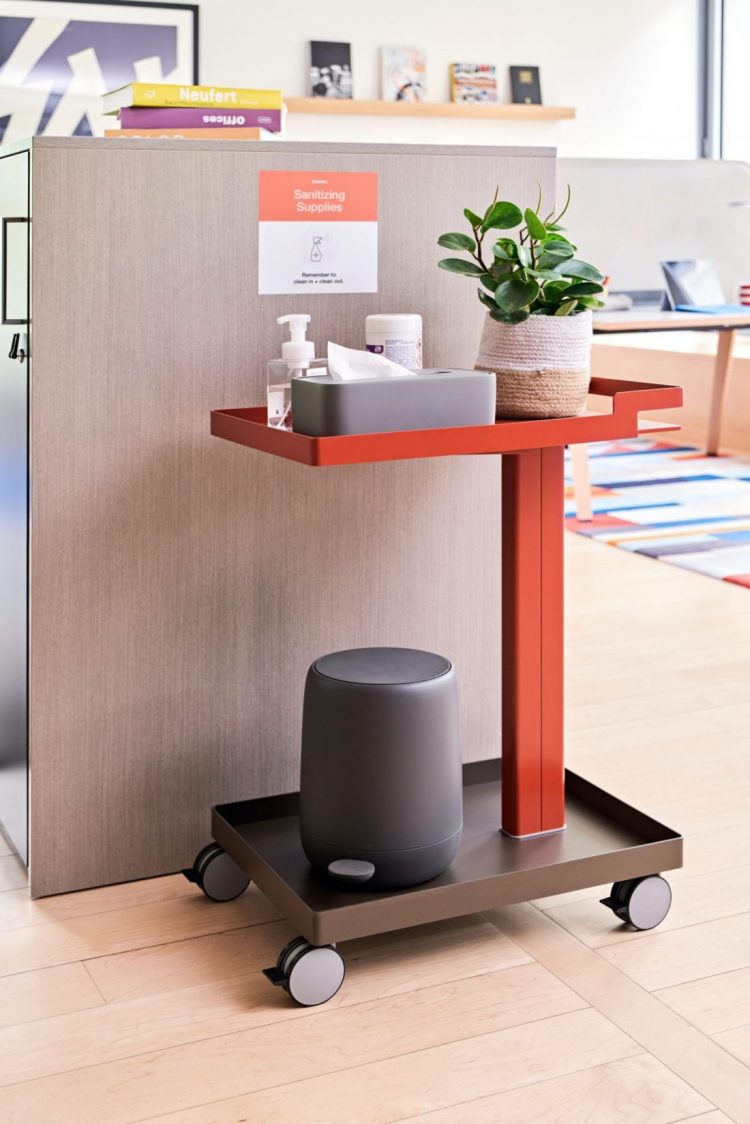
Policies and Procedures
We provided a daily health screening checklist for our employees to self-monitor for illness every morning. This checklist was made specifically for the symptoms of Covid-19, but the idea of self-monitoring was intended to make sure employees are always assessing themselves in the morning for any illness and deciding if they are healthy enough to come to work, or if they should stay home and avoiding spreading illness in the office.
We implemented strict physical distancing protocols in the office to prevent spread of illnesses. Employees are asked to maintain a minimum of six feet of physical distance between each other in the office. Where physical distancing is not possible, we have provided face coverings for employees to wear when working closely with clients or each other.
We implemented a strict hygiene protocol to ensure surfaces stay clean throughout the day. Employees are encouraged to wash hands before and after interacting with common surfaces like our break room, restrooms, or meeting rooms. Additionally, we wipe down these common surfaces, doors, and other high-touch areas four times per day to minimize the risk of illness spreading through contact with surfaces. Employees are also reminded to avoid touching their faces, cover coughs and sneezes, and be mindful of touching other people’s things.
While new policies and procedures were necessary to re-frame the way employees think about how illness spreads in the office, some physical changes were necessary as well.
Physical Layout Changes
In certain instances, employees’ desks were facing each other without any significant barriers between them. To address this concern, we re-oriented desks so employees were not facing towards each other without barriers between them.
| Before: | After: |
|
|
|
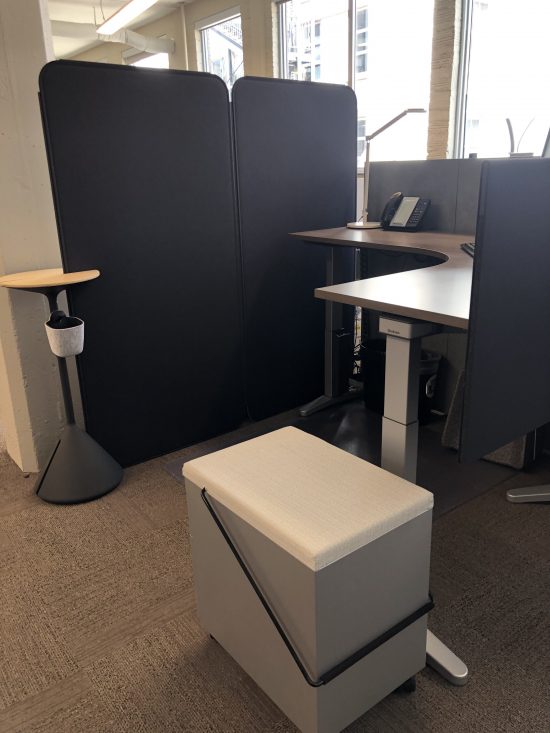
Some walkways and common spaces in the office were restricted by furniture that made it difficult to move through the space without coming in close contact with others passing by. We rearranged these spaces to open up walkways and common areas and allow for people to move freely through them without coming into close contact with others.
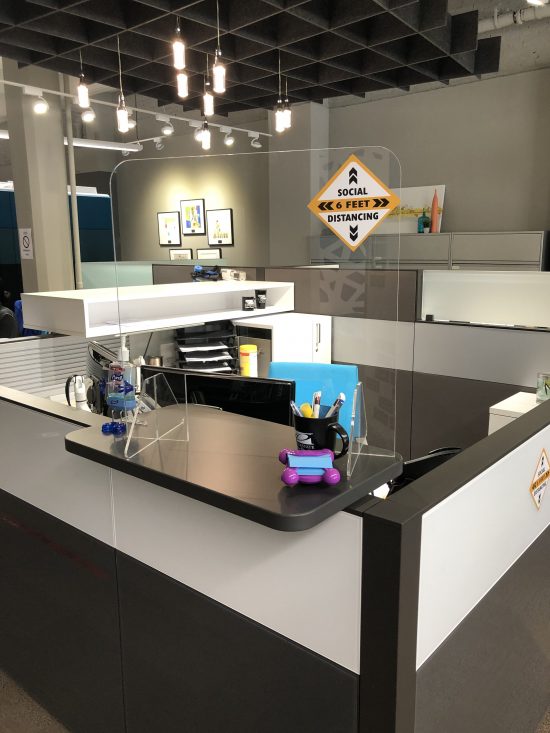
To limit contact between visitors and IOP staff, we added an acrylic, see-through barrier to our customer service rep’s transaction top.
Some workstations were unable to be moved apart or reoriented significantly to prevent employees from facing towards each other. To correct this, we added clamp-on screens to the desks that would provide a barrier between employees. We also re-positioned monitor arms on the desks to limit direct face-to-face seating.
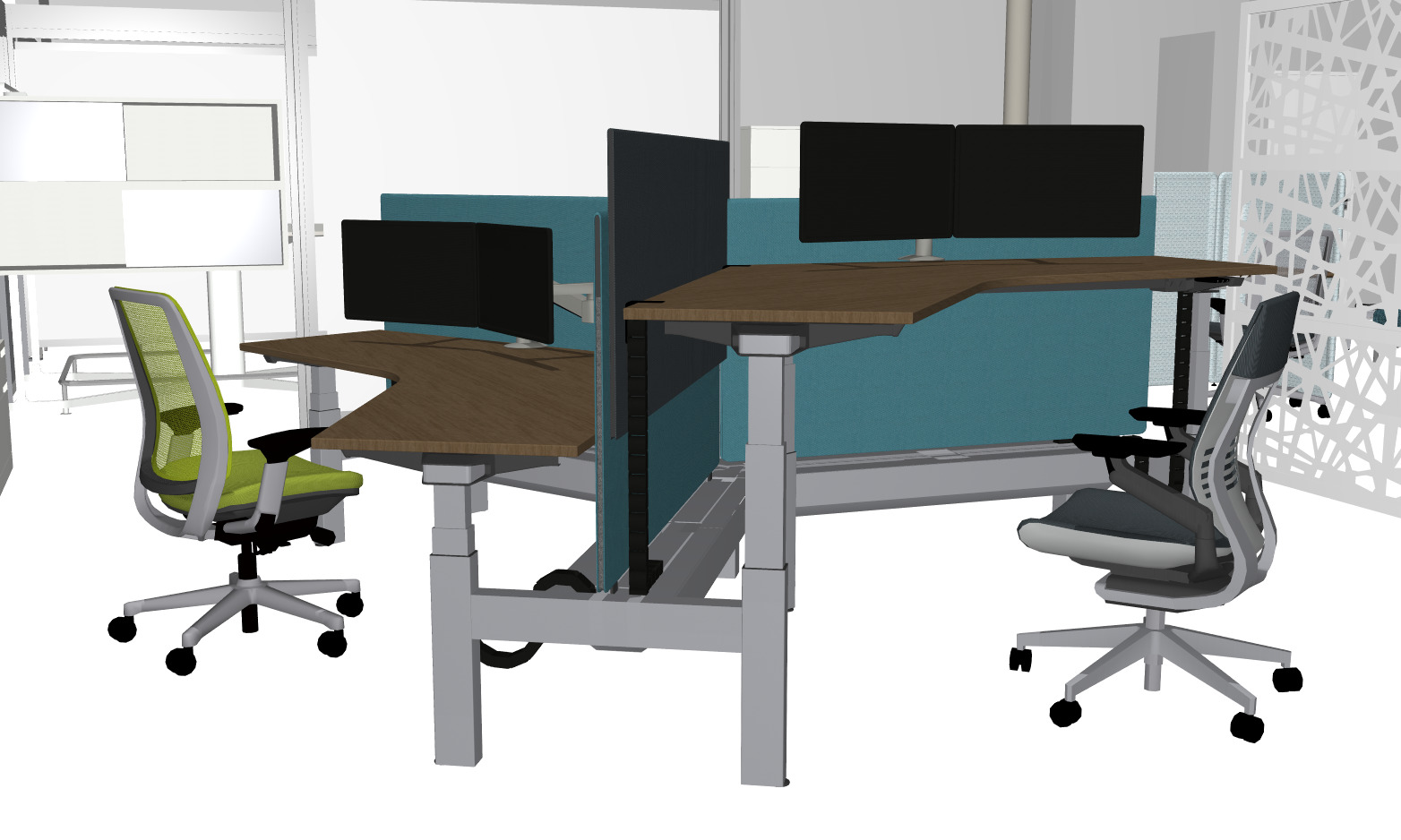
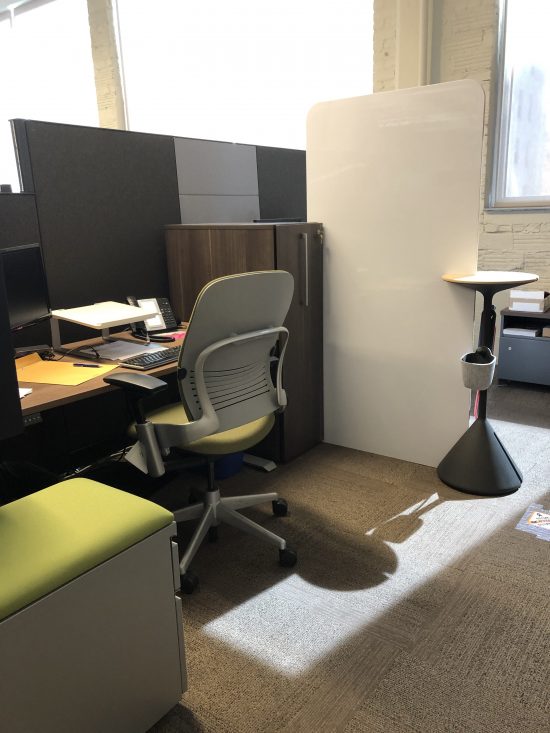
In places where employees were sitting side-by-side, but had no significant barriers between them, mobile whiteboards were added to prevent face-to-face contact.
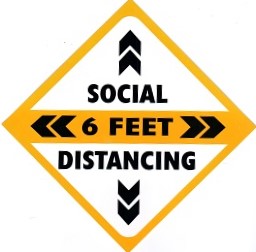
To encourage employees to practice good physical distancing, we added signage and screens in the space as visual cues to be aware of surroundings. These signs on the floors, walls, and in common spaces have been effective reminders for employees to maintain six feet of distance between each other.
The Post-Covid Workplace: Now, Near, and Far
Steelcase has developed a strategy for designing the post-Covid workplace by dividing it into three time frames: the now, the near-term, and the far.
Responding in the Now
Employers should determine what steps are necessary to bring some number of their staff back to the office immediately. Organizations need to retrofit their workplaces with what they have now and can put in place quickly. This means adding screens where necessary and reducing density if appropriate physical distancing is not possible. Responding quickly now can help organizations bring their first wave of workers back into the office.
Planning for the Near-term
After making accommodations to bring back their first wave of workers, business leaders need to plan on how they will reconfigure their office space to bring back the rest of their teams. This is making the physical layout changes that we discussed above – reorienting desks, rearranging common spaces, and adding screens where necessary. The goal of this phase is to get all your employees back to the office.
Looking Toward the Far
While our office has been able to retrofit and reconfigure as necessary to accommodate our full team, we will need to reinvent our workplace going forward. Workspaces will need to be flexible to adapt to a changing environment. We need to integrate research on health and safety with technology and employee feelings to develop workplaces that are comfortable, safe, and effective. Rather than the fixed idea of the office that we understand right now, we will need to look towards flexibility and fluidity to reinvent the post-Covid workplace.
Interested in learning more? Download Steelcase’s Post-Covid Workplace guide. If you are ready to move your office into the Post-Covid world, contact Interstate Office Products at iop@i-o-p.com or 605-339-0300.


